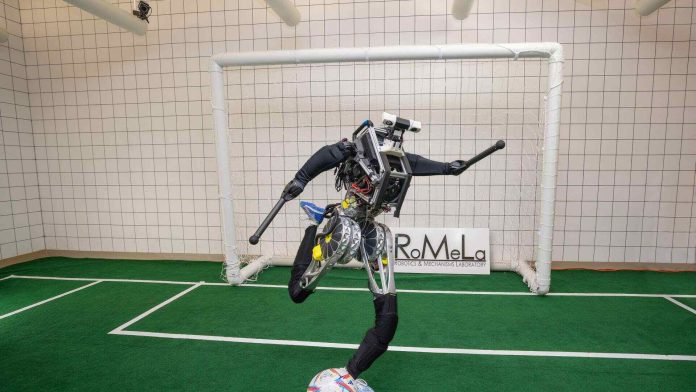ARTEMIS is a first-of-its-kind robot created by mechanical engineers at the University of California, Los Angeles (UCLA), standing 4 feet, 8 inches tall (142 centimetres) and weighing 85 pounds (38 kg). It is prepared for the pitch.
ARTEMIS, which stands for Advanced Robotic Technology for Enhanced Mobility and Improved Stability, is a cutting-edge robot that can run, survive being hurled objects, and maintain its balance against hard kicks and shoves. But on top of that, ARTEMIS’s ability to kick a ball distinguishes it from other robots.
“How would you be able to use these robots for more important things, like saving people’s lives, if your robot cannot even play a game of soccer?” Dennis Hong, a professor of mechanical and aerospace engineering and the head of UCLA’s Robotics and Mechanisms Laboratory (RoMeLa), which created ARTEMIS, made this statement.
According to Hong, the same technologies that are utilised to create robots that can play football are also employed in other fields, such as firefighting and disaster assistance. Even though ARTEMIS won’t be at the upcoming FIFA World Cup, Hong’s team will demonstrate all of its football prowess at the July RoboCup in Bordeaux, France.
The robot’s main innovation is that its actuators, or machines that create motion from energy, were specifically created to behave like real muscles. Instead of the stiff, position-controlled actuators found in the majority of robots, they have springy, force-controlled ones.
Actuators used by ARTEMIS are also distinctive in that they are powered by electricity rather than hydraulics. Because hydraulic systems are infamous for leaking fluid, this implies that it is cleaner, quieter, and performs more effectively. Justin Quan, a RoMeLa student, said his personal objective is to design robots that enhance people’s lives.
It’s very gratifying to see these robots advance robot technology, he continued, because you start to feel like your goal is coming true.


